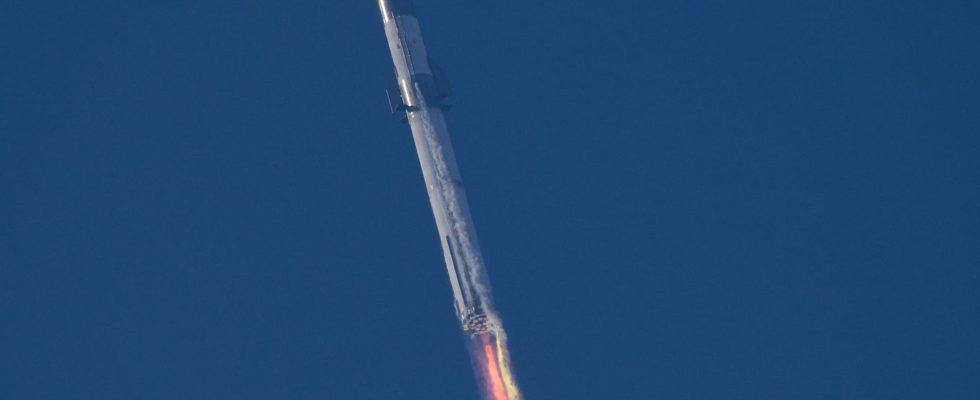SpaceX has just launched Starship, the largest and most powerful rocket ever built.
The second test flight of Spaceship, SpaceX’s next-generation spacecraft intended to carry astronauts to the Moon and beyond, likely ended in another failure on Saturday, seven months after an explosion during of his first test. The unmanned craft mounted on its Super Heavy mega-launch vehicle took off from SpaceX’s launch pad in Boca Chica, Texas, climbing to an altitude of about 90 km for a 90-minute flight into space but engineers at ground lost contact with the rocket’s second stage after ten minutes, Elon Musk’s space company said.
“We lost the data from the second stage (…). We think we lost the second stage,” said the commentator of the live images broadcast by SpaceX of the rocket launch, John Insprucker.
Starship managed to detach itself from its Super Heavy launcher, which exploded shortly after over the Gulf of Mexico, and contact with the vessel was subsequently interrupted.
A rocket twice as powerful as Saturn V
The objective of the mission was to approach orbit, before descent into the Earth’s atmosphere and landing the spacecraft off the coast of Hawaii. If successful, SpaceX would have taken an important step in its ambition to develop a large multi-function spacecraft, capable of sending astronauts to the Moon – on behalf of NASA – during this decade, the ultimate goal then being to travel to Mars.
Elon Musk, founder and boss of SpaceX, hopes that Starship will eventually replace the Falcon 9 rocket, the centerpiece of the space company, which sends a large part of the world’s satellites into orbit. The stakes are also high for NASA, SpaceX’s first customer, which is counting on the company to play a central role in its Artemis lunar exploration program, successor to the Apollo missions more than half a century ago.
With its first stage and 33 Raptor engines, Starship/Super Heavy produces twice as much power as the Saturn V rocket that sent astronauts to the Moon. During the first test flight on April 20, the machine disintegrated less than four minutes after takeoff.

